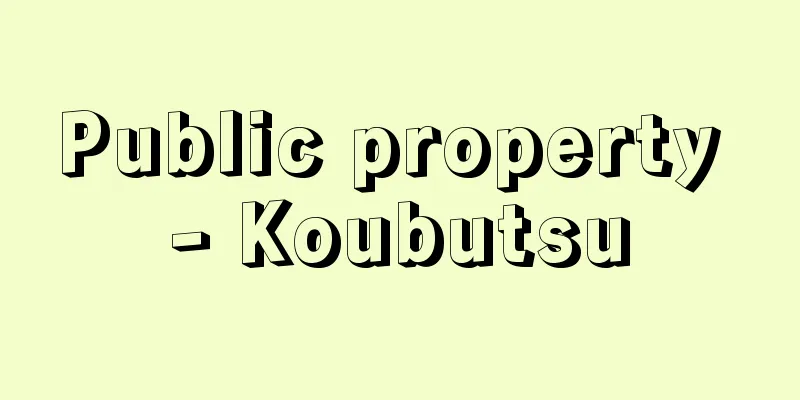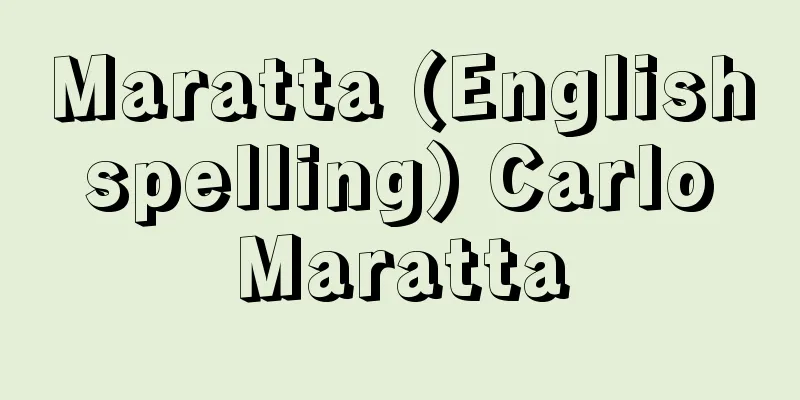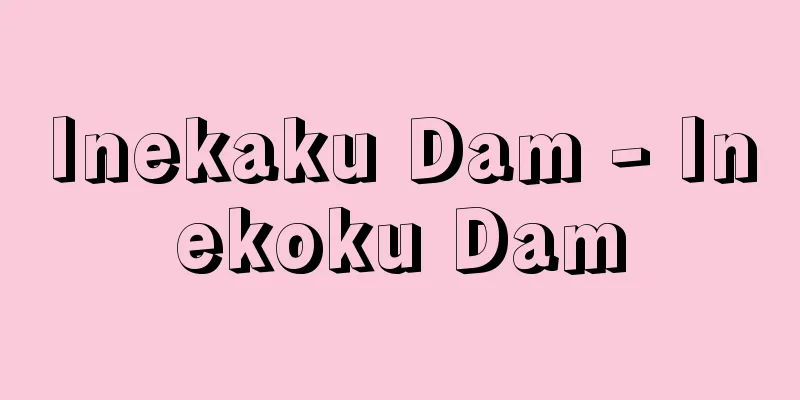Public property - Koubutsu

|
It refers to individual tangible objects that are directly used for public purposes by administrative bodies such as the national or local governments, regardless of ownership. There are various types of public objects: public objects (roads, rivers, parks, beaches, etc.) that are directly used for the general public, public objects (government office buildings, national and public school buildings, etc.) that are directly used for the public purposes of the national government or public bodies, natural public objects (rivers, beaches, etc.) that usually already have a substance that can be used for public purposes in their natural state, and artificial public objects that become public objects only when administrative bodies add artificial elements and intentionally use them for public purposes. In order to achieve the purpose of directly providing public property for public use, public property is subject to special laws such as the National Property Law, Article 238-4 of the Local Autonomy Law, the River Law, the Road Law, the Coast Law, the Port Law, and the Urban Park Law. In principle, public property is subject to private law unless there is a special provision, but there are often disputes over interpretation. First, public property may be subject to restrictions on the establishment or transfer of ownership in order to achieve a public purpose. The question of whether public property is subject to acquisitive prescription was once denied, but today's precedents have affirmed this, since this becomes an issue when village roads, waterways, and coasts lose their public nature and have been occupied by private individuals for many years. The scope of public property may be determined by administrative measures under special laws, and the use of land adjacent to public property may be restricted from the standpoint of public property conservation (river conservation areas as defined by Article 54 of the River Law, coastal conservation areas as defined by Article 3 of the Coast Law, etc.). If there is a defect in the installation and management of public property, the person in charge of installing and managing the public property or the person who bears the costs will be liable for compensation, regardless of whether or not there was negligence on the part of a public official (State Compensation Act, Articles 2 and 3). There are three types of public property usage relationships: (1) General (free, ordinary) use of public property This essentially means using something freely without permission, provided that it does not interfere with the shared use of the property by others. Examples include passing through roads, strolling in parks, using the beach for swimming, and swimming and washing in rivers. Public property is originally provided for government use, but it has traditionally been explained that free use may be permitted, such as the free passage of property within the campuses of national universities. However, national universities have also been incorporated as non-civil servant-run corporations, and it is no longer clear whether public property is public property in the first place. (2) Permitted Use In order to prevent the use of public property from interfering with public safety and order, or to regulate simultaneous use by a large number of people, generally free use is restricted and those restrictions are lifted in specific cases. Examples include permission for demonstrations and marches under the Public Security Ordinance or the Road Traffic Act. (3) Patent use: This grants a right of use to a specific person. Examples of this include erecting utility poles on roads, burying gas pipes, laying railroad tracks, constructing dams on rivers, and setting up restaurants and barber shops within government offices. [Yasuhito Abe] [Reference items] | |Source: Shogakukan Encyclopedia Nipponica About Encyclopedia Nipponica Information | Legend |
|
国または地方公共団体等の行政主体により直接、公の目的に供用される個々の有体物をいう。所有権の所在を問わない。その種類としては、直接、一般公衆の共同使用に供される公共用物(道路、河川、公園、海浜など)と、直接には国、公共団体の公用に供される公用物(官公署の建物、国・公立学校の建物など)、自然の状態においてすでに公の用に供しうべき実体を備えるのを通常とする自然公物(河川、海浜など)と、行政主体が人工を加え、かつ意思的にこれを公の用に供することにより初めて公物となる人工公物などの区別がある。 公物は直接、公用または公共用に供されるという目的を達成するために、国有財産法、地方自治法第238条の4、河川法、道路法、海岸法、港湾法、都市公園法など特別な法律の適用を受ける。特殊の規定がなければ私法の適用を受けるのが原則であるが、解釈上争いの生ずることが少なくない。まず、公物は公の目的を達成するため所有権の設定なり移転について制限されることがある。公物が取得時効の対象となるかどうかについては、かつては否定されていたが、それは里道、水路、海岸などが公物性を喪失し、私人が長年占有していた場合に問題となることから、今日では肯定するのが判例である。公物の範囲については特別法で行政処分により決することができるとされていることがあり、公物保全の見地から公物の隣地の利用が制限(河川法54条の定める河川保全区域、海岸法3条の定める海岸保全区域等)されることがある。公物の設置管理に瑕疵(かし)がある場合には、公務員の過失の有無を問わず、公物の設置管理者または費用負担者が賠償責任を負う(国家賠償法2条、3条)。 公物の使用関係には次の三つの種類がある。 (1)公共用物の一般(自由、普通)使用 本来他人の共同利用を妨げない限度において許可を要することなく自由に使用することをいう。道路の通行、公園の散策、海水浴のための海浜の使用、河川における水泳・洗濯などがその例である。また、公用物はもともと官庁の利用に供されるが、従来、国立大学構内の自由通行のように自由使用が認められることがあると説明されてきた。しかし、国立大学も非公務員型に法人化され、そもそも公用物であるのかが明らかでなくなっている。 (2)許可使用 公物の使用が公共の安全と秩序に支障を及ぼすのを防止し、または多数人の同時使用を調整するために、一般には自由な使用を制限し、特定の場合にその制限を解除するもので、公安条例や道路交通法によるデモ行進の許可がその例である。 (3)特許使用 特定人に使用権を設定するもので、道路に電柱を建て、ガス管を埋設し、軌道を敷設し、河川にダムを建設し、官庁内に食堂や理髪店を設置するのがその例である。 [阿部泰隆] [参照項目] | |出典 小学館 日本大百科全書(ニッポニカ)日本大百科全書(ニッポニカ)について 情報 | 凡例 |
>>: College of Engineering - Kobu Daigakko
Recommend
Performance symbols - Vortragsbezeichnungen (German)
The notation method using five lines, which was a...
Advice decision - Kankokushinketsu
...The final decision that is handed down through...
beautyquark
…Furthermore, in 1977, an experiment using the pr...
Modern times
〘noun〙① The present world. The present age. The co...
Polystichum retroso-paleaceum
…[Shigeyuki Mitsuda]. … *Some of the terminology ...
Mizuho [town] - Mizuho
A former town in Ochi District, central Shimane Pr...
Flagship - Exciting
...His real name was Shozo. He became interested ...
abyssal hills
… sill: the lower part of an ocean rift or saddle...
Sea Peoples - Uminotami (English spelling)
A general term for the tribes that caused widespre...
Lutheran World Federation
…Since then, with the expansion of Christian miss...
Troides prattorum
…It is found in India, Sri Lanka, New Guinea, and...
Condensed milk
...It is made by concentrating milk or skim milk,...
Mitsuba (three-leaf clover) - Mitsuba (English spelling) Cryptotaenia japonica; hornwort
A perennial herb of the Umbelliferae family, widel...
Kurotaki [Village] - Kurotaki
A village in Yoshino County, central Nara Prefectu...
Ashio mine
Located in Ashio-cho, Kamitsuga-gun, Tochigi Prefe...









